This is your ultimate guide to making pancit bihon–a quintessential Filipino noodle dish made with rice vermicelli, pork, and vegetables. This version also uses shrimp and fish balls to make it extra special.
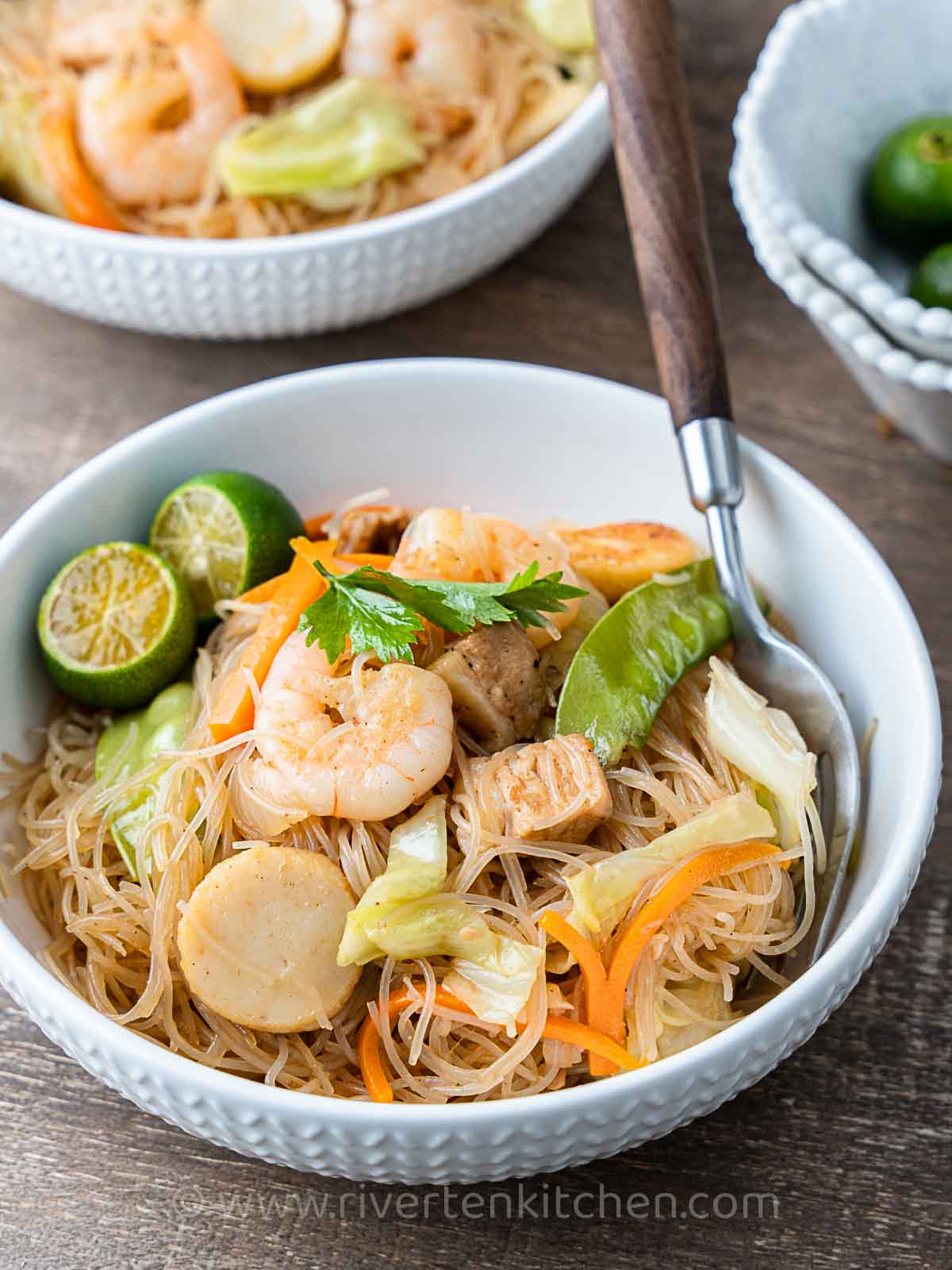
What is Pancit?
Pancit (pronounced as PAN-sit) is a Filipino word that refers to noodles. The term was believed to have been derived from “pian i sit” a Chinese Hokkien word that literally means “convenient food”.
True to its name it is indeed one of the most convenient food in the Philippines. You can make it with pork, chicken, or shrimp. It also has lots of vegetable options – if you’re looking for a recipe to use up leftover vegetables then this is what you need.
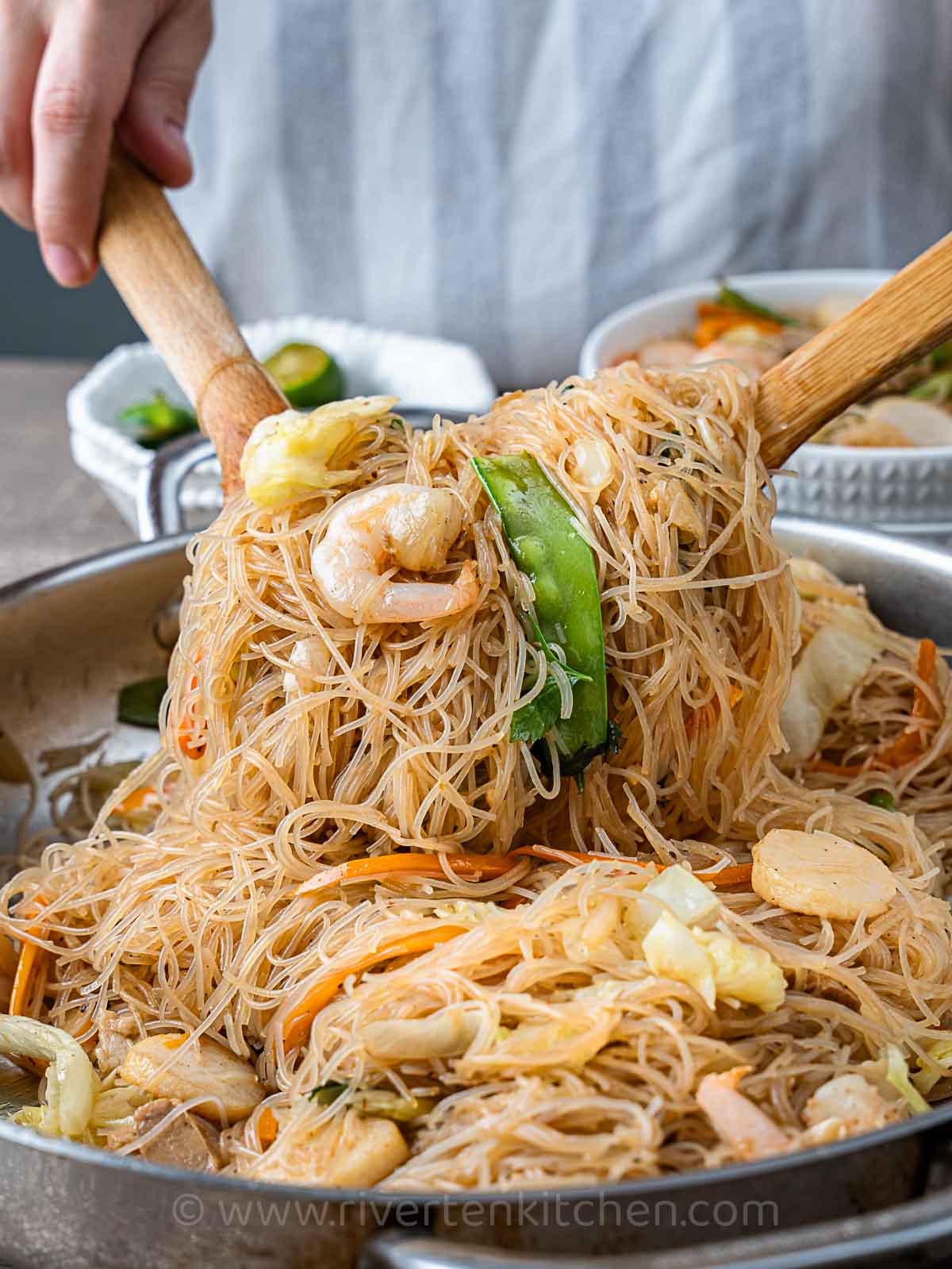
Pancit Bihon vs Pancit Canton
Pancit bihon (also known as pancit bihon guisado) is made of rice noodles or rice vermicelli while pancit canton is made of yellow wheat flour noodles. Their cooking method is similar whereby the noodles are cooked in the broth rather than pre-cooking in hot water.
These two dishes have a lot of similarities in ingredients, especially with vegetables and other toppings but the sauce for pancit bihon is much simpler.
Pancit Ingredients
Here are the ingredients you need to make the best Filipino pancit:
Bihon Noodles
The type of noodles for this version of pancit is also known as rice vermicelli, bee hon, or bihun in other parts of Asia. These THIN rice noodles (rice sticks) are made of rice as the name implies. Note that it should not be confused with flat rice noodles which are usually used for Pad Thai and Vietnamese Pho.
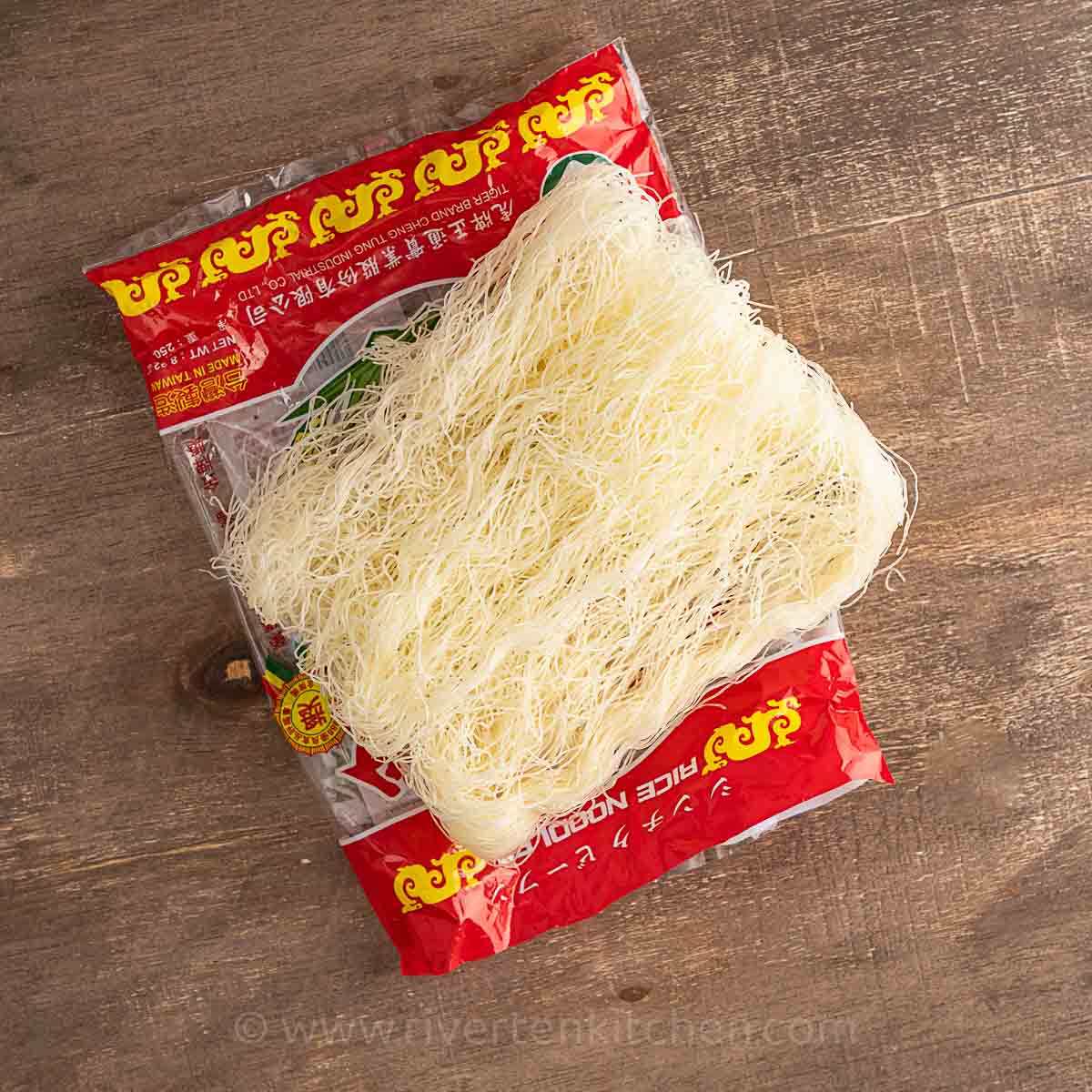
When choosing noodles for Filipino pancit, I recommend using rice vermicelli made of rice and cornstarch/ tapioca starch instead of just pure rice (plus water). I find them sturdier and do not break easily during the cooking process. In this recipe, I particularly used a pack labeled “Rice Stick Bihon (Noodles Vermicelli)”.
Pork, Chicken, or Shrimp
Use them interchangeably or use them all at the same time. Yes, you can! Pork cuts you can use are pork belly, butt, or shoulder. For chicken, use thighs for a juicier texture.
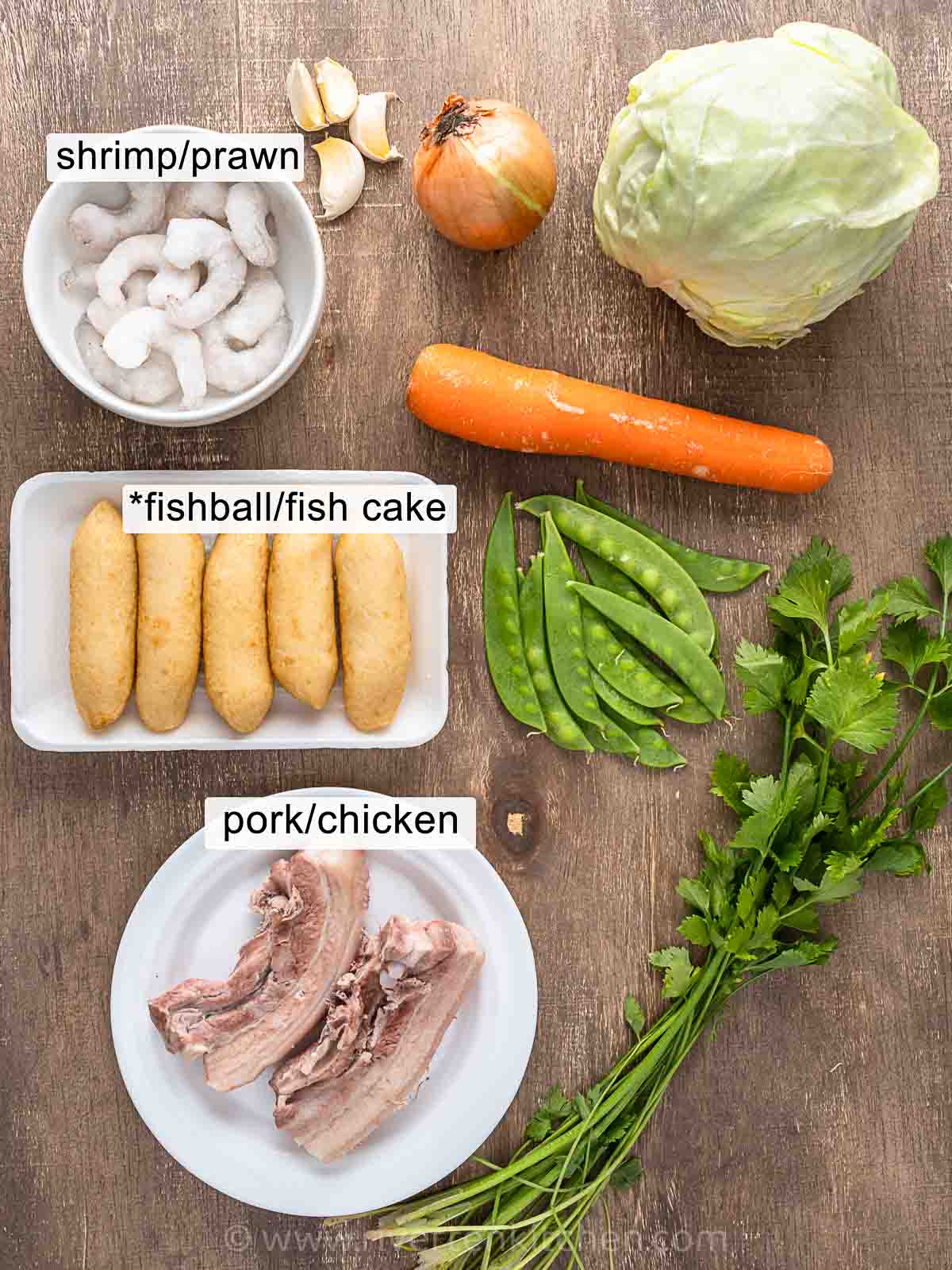
Recommended Vegetables
Pancit Bihon is a Filipino noodle dish that typically includes a variety of vegetables. Here are some vegetables I personally love putting in my pancit:
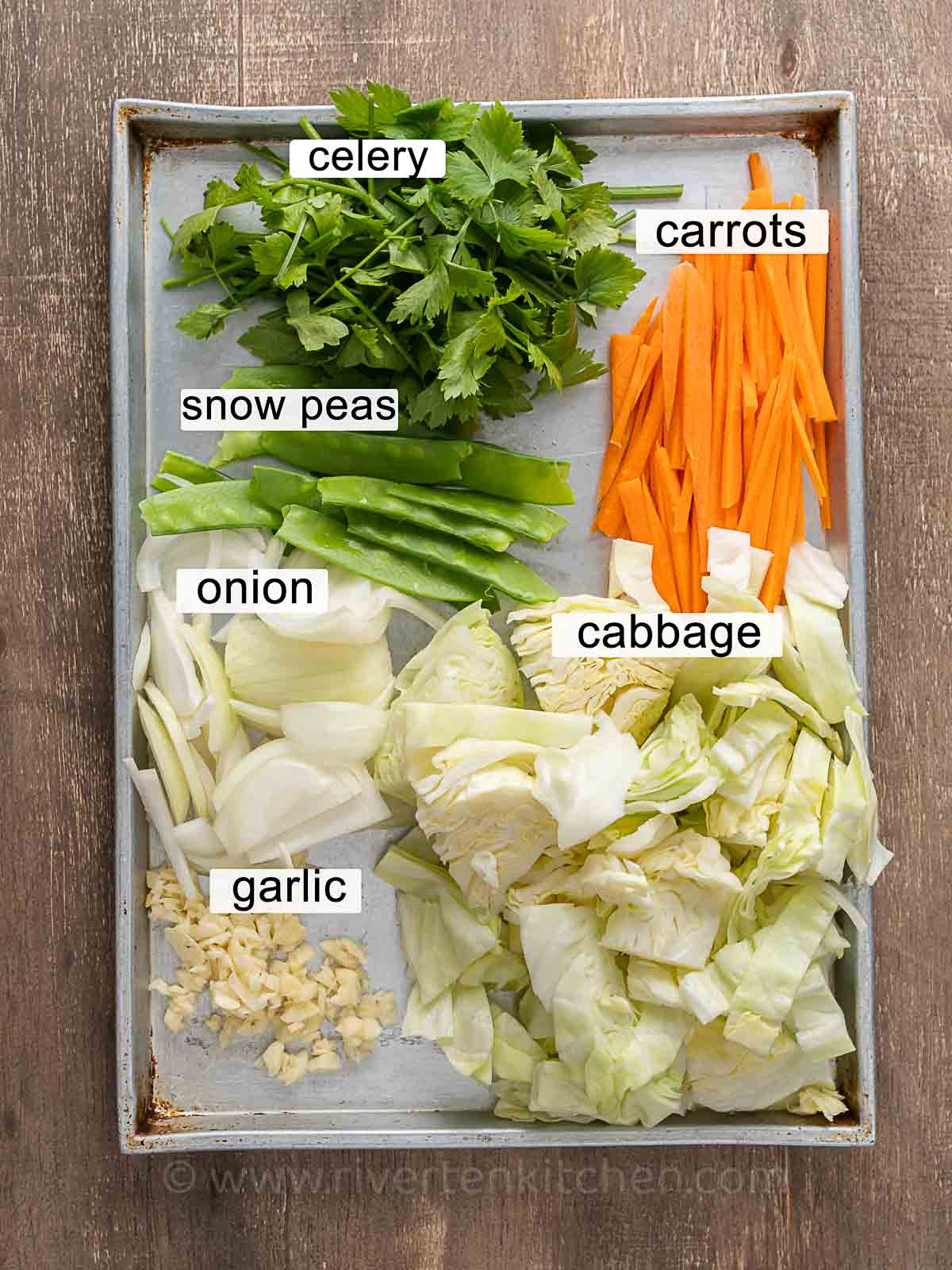
- Cabbage – Adds a crunchy texture to Pancit Bihon and is a staple ingredient in the dish.
- Carrots – Julienne or thinly sliced carrots provide color, texture, and a subtle sweetness to the dish.
- Snow Peas – These tender, sweet peas are often included in this Filipino noodle dish. Trim the ends and add them towards the end of cooking to maintain their crispness.
- Green Beans – Cut into bite-sized pieces, green beans bring a fresh and crisp element to the dish.
- Stalk Celery or leaf celery can be used interchangeably – cook the stalk with the rest of the vegetables then add the leaves just before the noodles finish cooking.
These vegetables bring incredible flavor and texture to this delightful noodle dish. Feel free to adjust the vegetable quantities based on your personal preference.
Pancit Bihon Sauce
Rice noodles are generally bland and that’s why it’s perfect for absorbing any flavors. Here’s what you need to make the bihon delicious:
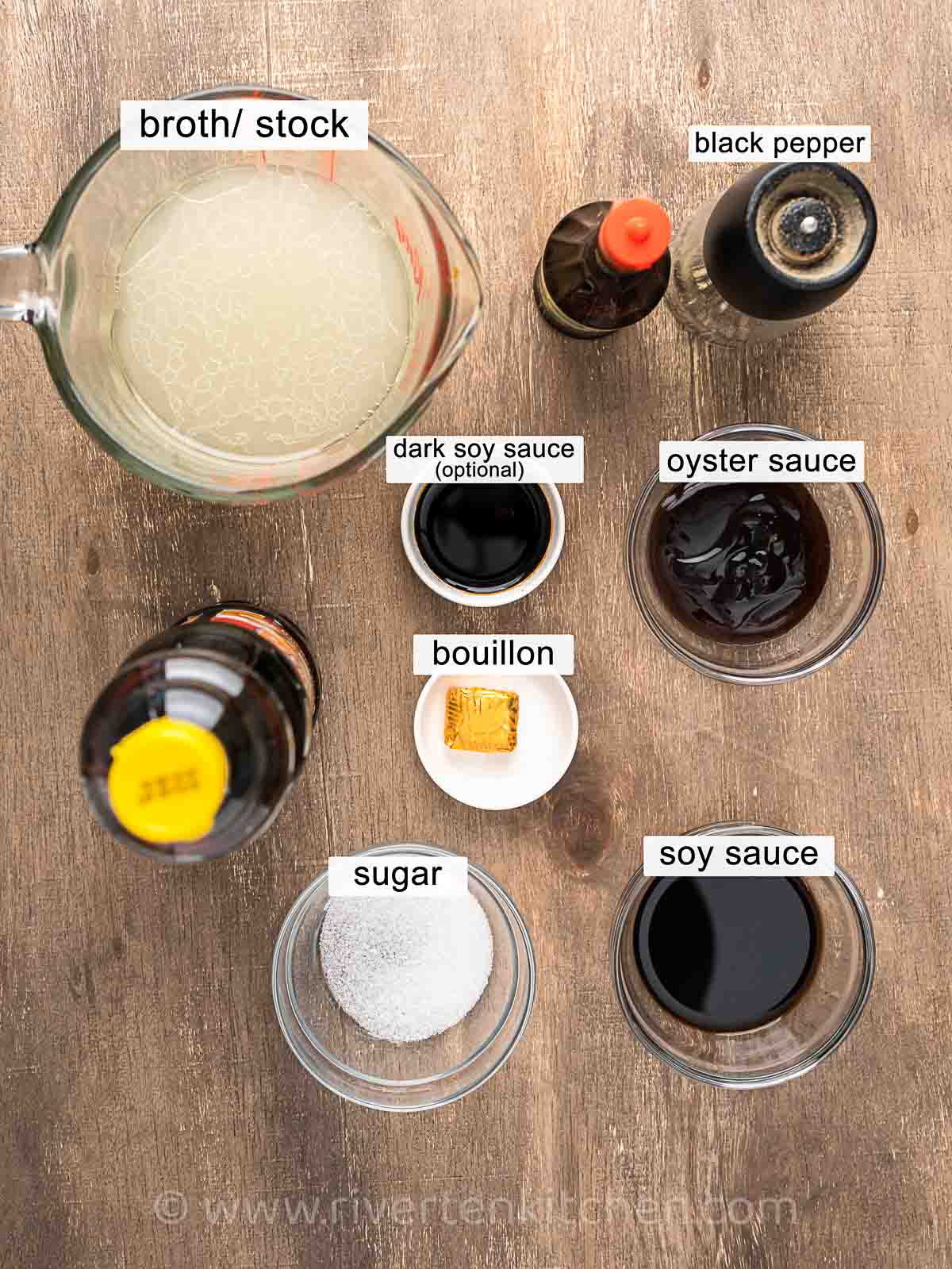
Soy Sauce
I use Filipino soy sauce. Regular soy sauce with a hint of dark soy sauce works well too. Want an even more depth of flavor? Add fish sauce or patis.
Oyster Sauce
Adds a layer of complex salty-sweet flavor. You can find this in the Asian section of grocery stores.
Broth–key to making a good pancit
A combination of homemade broth plus bouillon cubes for added depth of flavor is the key to making a good pancit bihon. I love using pork broth from lechon kawali as it’s packed with collagen which sticks to the noodles and makes them extra slippery. But chicken broth can also be used as an alternative.
For the bouillon, my favorite is shrimp bouillon which adds a nice depth of flavor to the dish. You can also use chicken or pork bouillon.
Sugar
To balance the savory flavors in my pancit bihon, I add a small amount of sugar. This little secret enhances the taste and creates a pleasant balance, similar to what you would find in restaurants.
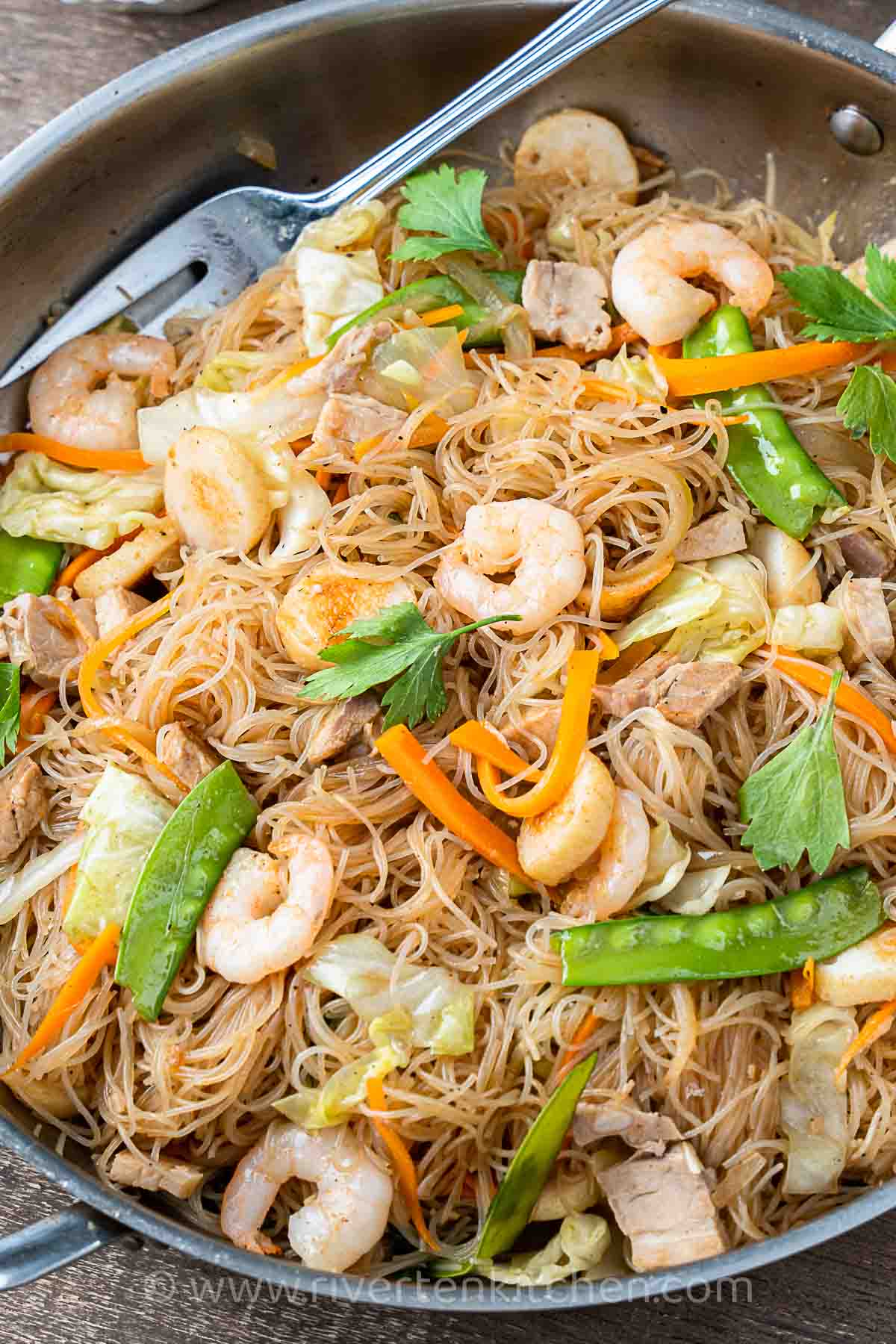
How to Make It
My pancit bihon recipe has 2phases. I recommend using a single pan/wok for cooking and boiling for fewer dishes to wash:
Part 1: Preparations
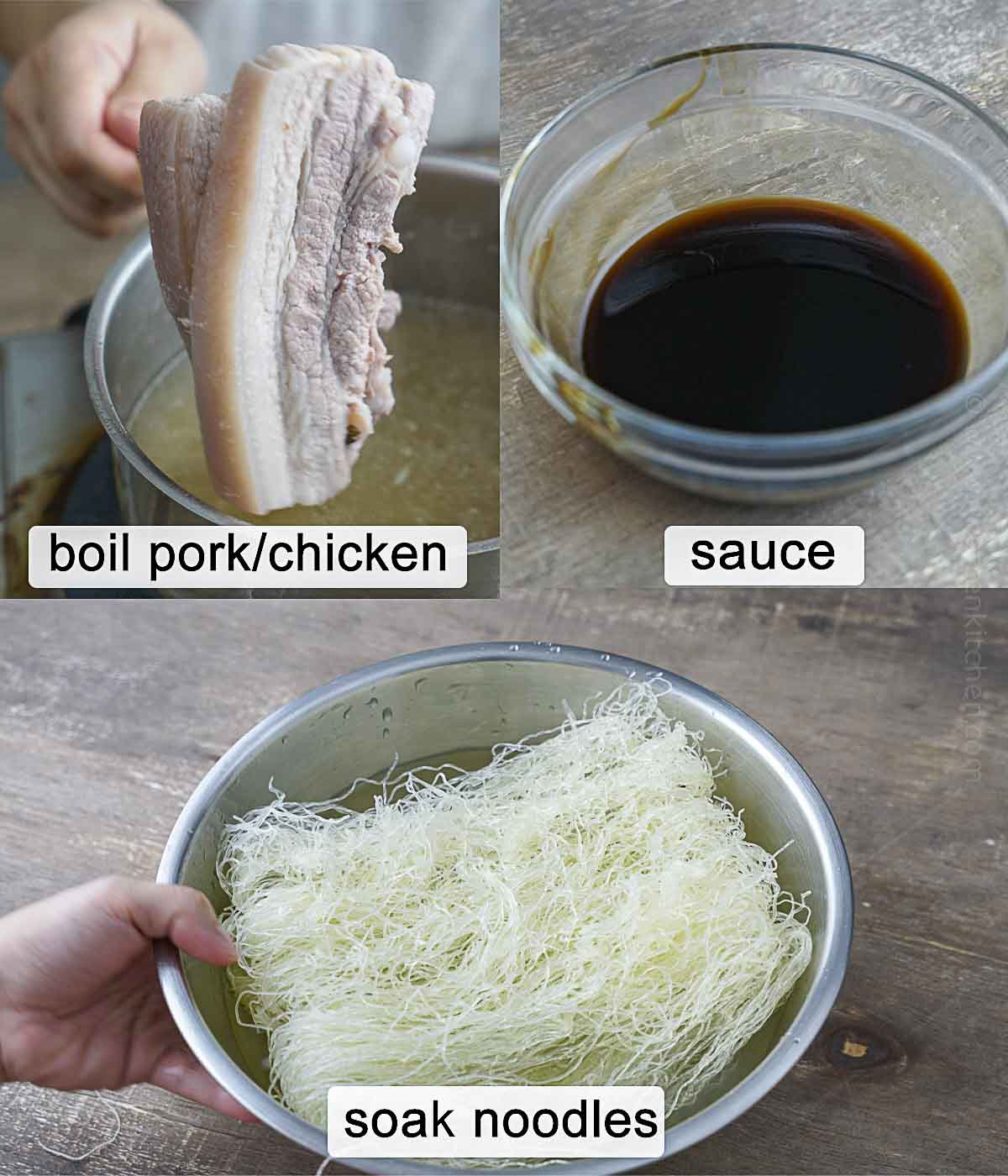
- Boil the pork until tender – Cook the pork separately until it becomes tender. This ensures that the meat is really soft and easy to eat. Additionally, I utilize the flavorful broth from boiling the pork to cook the rice noodles, infusing them with a delicious taste.
- Make the sauce – Combine all the ingredients in a bowl. Stir until the sugar is dissolved. This sauce will be used to season the vegetables and noodles.
- Soak the pancit noodles in room temperature water to hydrate and make them pliable and easier to cook by reducing the cooking time.
Part 2: How to Cook the Best Pancit Bihon
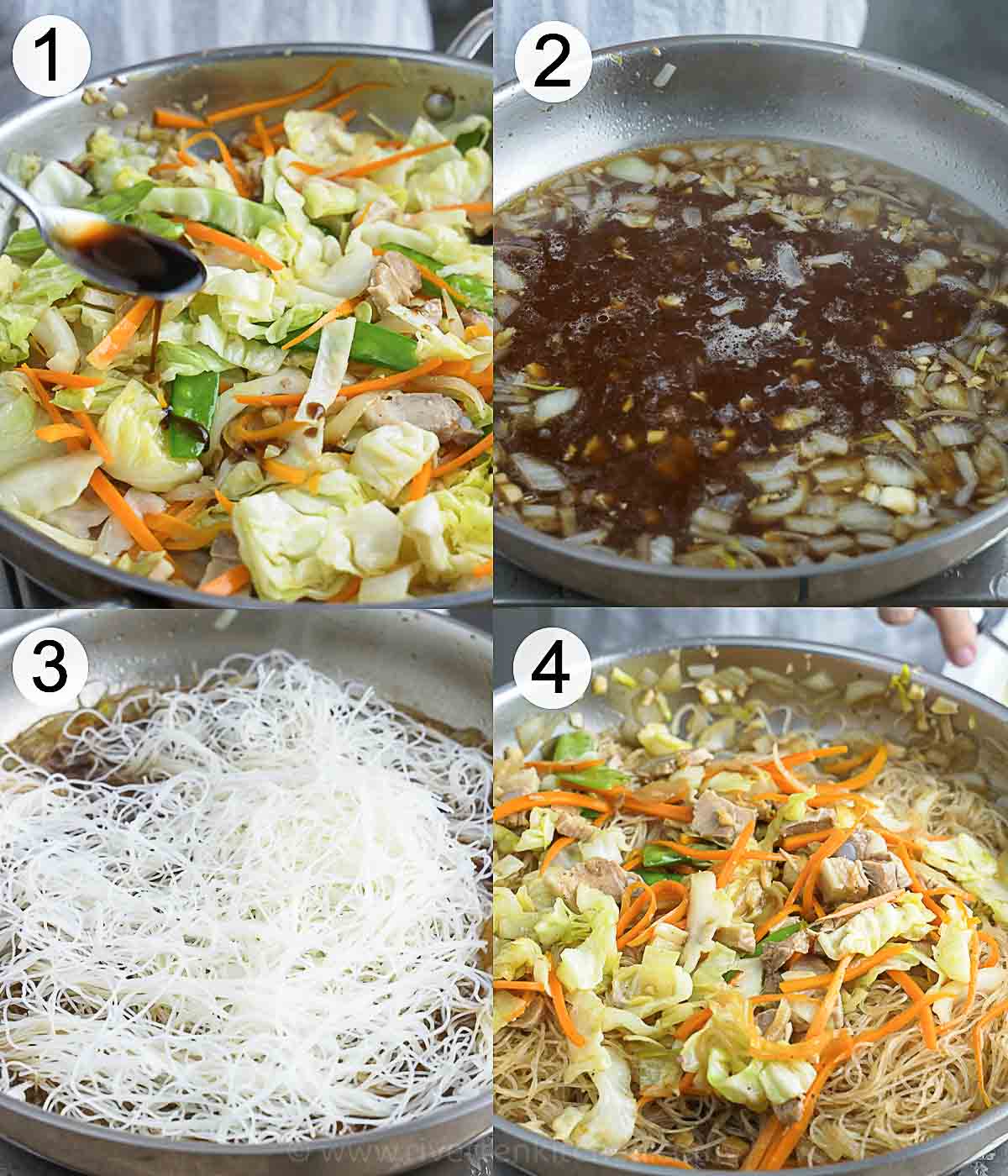
Here are a few cooking tips:
Cut the vegetables into uniform sizes
To cook the vegetables evenly, cut them into uniform sizes. This especially applies to carrots and celery which take longer to cook. Shred the cabbage or peel then cut into squares if you want it to stand out.
Cooked but crisp vegetables
Stir-fry the vegetables with a little liquid. Use the sauce mixture made up of broth and seasonings. A couple of tablespoons is enough to lightly steam the vegetables. Say bye-bye to overcooked or undercooked vegetables!
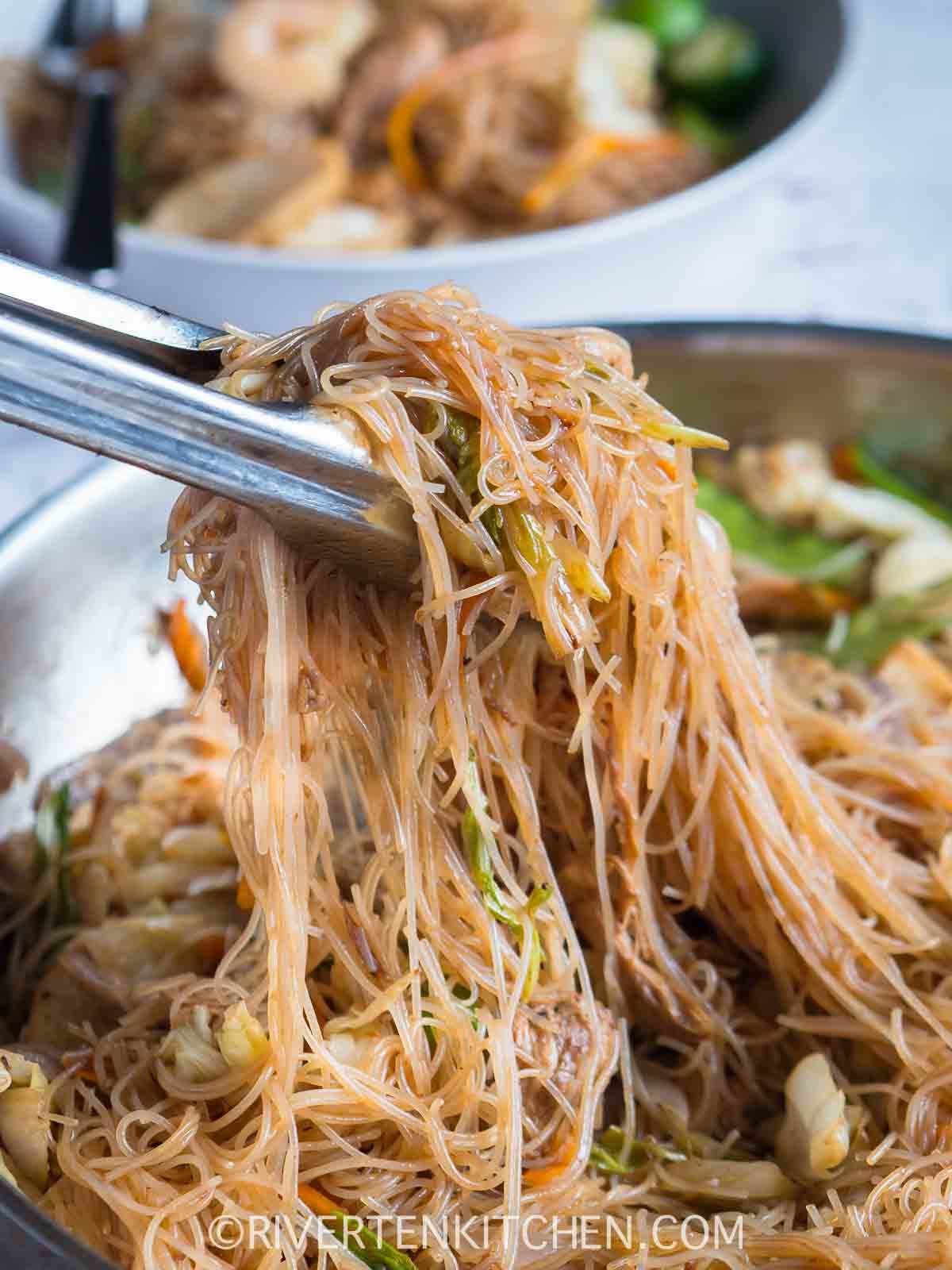
How to cook the noodles
- Bring the broth to a “rapid boil” before adding the bihon rice noodles. This helps the pieces separate from each other and prevent clumping.
- Toss, don’t stir – constant stirring can break the noodles and make it mushy. So toss the noodles using two large spoons. Do it every so often just to help the noodles soak up the liquid. If you toss or stir constantly, the noodles will break.
- Taste test to check doneness – this is the only way to prevent overcooking.
- Remove from heat as soon as noodles are cooked but still firm a.k.a. AL DENTE. It will continue to cook and soak up the sauce with the residual heat.
Broth noodle ratio (prevent mushy bihon noodles)
Don’t use too much liquid/ broth. Rice vermicelli is particularly thin and fragile. If it soaks up too much water it can become mushy and breaks easily.
My go-to ratio is 1:8oz which means I use 1 1/2 cup of broth for every 8oz (227g) of bihon.
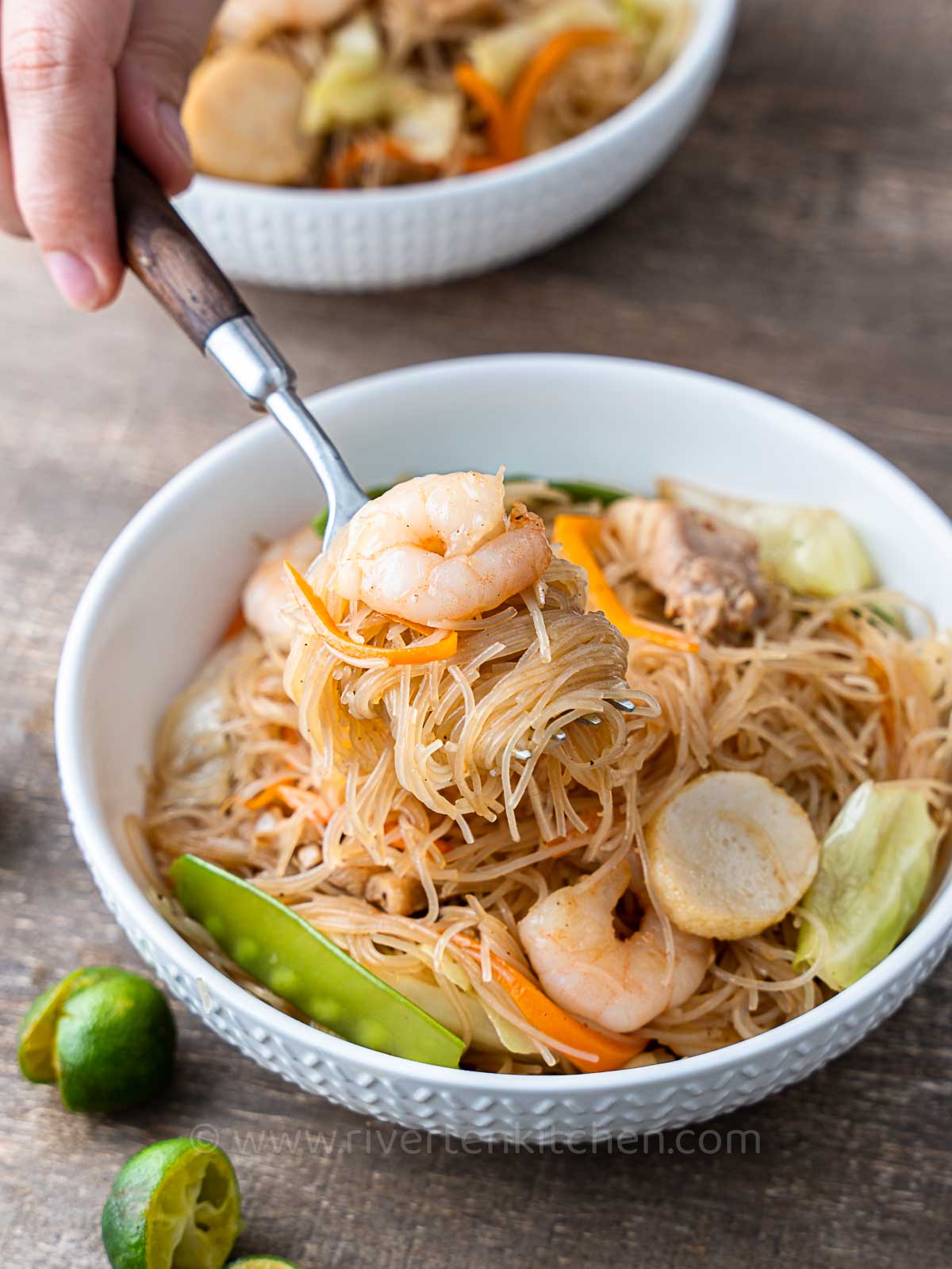
Other Vegetables you can add
A great way to change the flavor profile of pancit bihon is by using different combinations of vegetables.
Here are other vegetables you can use plus tips on how to prepare them:
- Green beans – slice thinly so it cooks with the rest of the vegetables.
- Napa Cabbage – slice into stalks so it cooks quickly. Cook it together with the celery and carrots.
- Bell peppers – use red, green, or yellow. Add together with the cabbage so it doesn’t overcook.
- Mushrooms like shitake, shimeji, portobello, button, and even wood ear mushrooms.
Make it extra special
If you’re serving pancit bihon for Christmas, New Year, or special occasions, add a fish ball, fish cake, Chinese sausage, fried meatballs, and even squid balls. You can find all these in the hot pot section of Asian supermarkets.
Have leftover lechon kawali? Use it as a topping. I’m sure everyone will enjoy it!
Add chicken or pork liver
To prepare: Slice into serving pieces then marinate in a small amount of vinegar for 10 minutes. Rinse with water. This step lessens its strong earthy smell.
To cook: Add it straight to the boiling sauce right before adding the noodles. Cook and gently toss with the noodles.
Make it meatless
To make a meatless version of this dish, use tofu, plant-based sausages, or plant-based chicken. For the sauce, use vegetable stock and mushroom sauce as a substitute for oyster sauce.
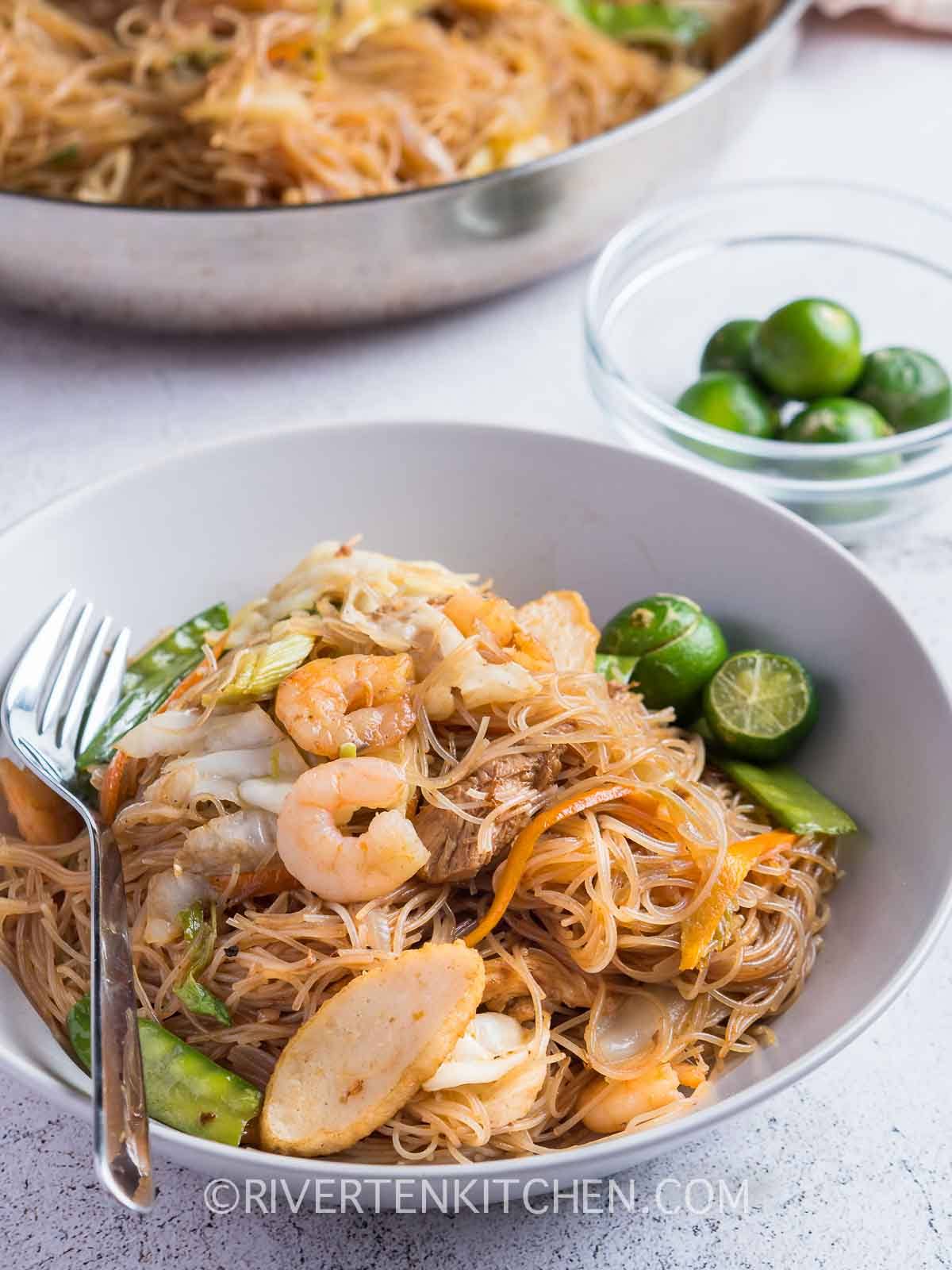
What to Serve with Pancit Bihon
Growing up, I always enjoy anything pancit with tasty bread, lumpiang shanghai, biko, cascaron (carioca), or bibingkang malagkit. Drizzle with calamansi juice, lemon, or lime, and my birthday is complete!
Cheers to a long life as my Mama would say!
Storage and Leftovers
Leftover pancit bihon can last in the fridge for up to 3 to 4 days stored in an air-tight container. Re-heat in a pan coated with oil or the microwave before serving.
You might like these too…
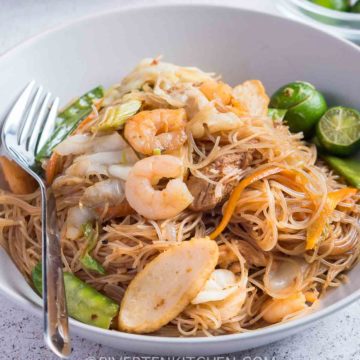
Pancit Bihon (Filipino Rice Noodles)
Ingredients
- 250 grams pork (see note 1)
- 4 cups water
- ¼ teaspoon salt
- 8 oz bihon/ rice vermicelli (see note 2)
- 3 tbsp vegetable oil
- salt and black pepper (to taste)
Vegetables and toppings
- 100 grams fish ball, fish cake or shrimp (or use both, optional)
- 3 cloves garlic
- 1 small onion
- 1 medium carrot (julienned)
- 1 cup snow peas (ends trimmed, string removed)
- 2 stalks celery or leafy celery (sliced diagonal strips)
- 2-3 cups cabbage (shredded)
Sauce
- 3 tablespoon Filipino soy sauce (see note 4)
- 3 tablespoon oyster sauce
- 1-2 teaspoon sugar
- 1 teaspoon dark soy sauce (for color, optional)
- 1 ½ cup broth (from the boiled meat)
- 1 piece shrimp bouillon (or chicken bouillon)
Instructions
- Boil pork in water and salt until tender. Remove the scum as it arises. Once the meat is tender, transfer it to a chopping board. Slice it into small strips. Reserve the broth.
- Soak bihon noodles in room temperature water (not hot) until soft and hydrated, 10 minutes. Drain and discard water.
- Mix all the sauce ingredients in a bowl.3 tablespoon Filipino soy sauce, 3 tablespoon oyster sauce, 1-2 teaspoon sugar
Toppings and Vegetables
- Heat 1 tablespoon oil in a wok or large pan over high heat. Add shrimp and fish ball. Saute until it turns pink, about 1 minute. Transfer to a plate and set aside.100 grams fish ball, fish cake or shrimp
- Heat 1 tablespoon oil in a wok or large pan over high heat. Add sliced pork and stir-fry until slightly brown. Add carrots and stalk celery. Cook for 2 minutes.250 grams pork, 1 medium carrot, 2 stalks celery or leafy celery
- Stir in cabbage and snow peas. Pour 1 tablespoon of the sauce mixture and 2-3 tablespoons of the broth. Continue stirring until vegetables are cooked but still crisp. Do a taste test. Season with salt and black pepper, to taste. Transfer to a large plate including the liquid (if there's any).1 cup snow peas, 2 stalks celery or leafy celery
Noodles
- Add 1 tablespoon of the oil in a wok. Add remaining garlic and onion. Stir-fry until translucent. Pour broth, bouillon, dark soy sauce, and remaining sauce. Bring to a boil. Taste and adjust seasoning as needed.1 1/2 cup broth, 1 piece shrimp bouillon, 1 teaspoon dark soy sauce
- Add bihon noodles. Simmer until the bottom side has softened. Using two large spoons flip to the other side and cook until noodles are completely soaked in the sauce. TOSS (don't stir) every so often until liquid is almost dried out and noodles are completely hydrated. Taste test noodles to check doneness. If noodles look dry, add a bit more broth.
- Add back half of the cooked vegetables, shrimp, and fish ball. Toss everything together. Remove from heat. Transfer to a serving plate and top with remaining vegetables. Serve and enjoy!
Recipe Notes & Tips:
- Meat – use pork belly or pork butt/shoulder. For chicken, I prefer using boneless chicken thighs for a juicier texture.
- Bihon Noodles – also known as rice vermicelli, bee hon, or bihun. Available in most Asian stores and online like Amazon. I recommend using rice vermicelli made of rice and cornstarch instead of just pure rice. I find them sturdier and do not break easily during the cooking process.
- Filipino soy sauce – substitute with 2 tablespoons regular soy sauce plus 1 tablespoon dark soy sauce for depth of color.
- Dark soy sauce – add to deepen the color of the noodles without making them salty. Totally optional.
- To make with chicken: You can follow the same steps as pork which require boiling or directly stir-frying sliced chicken pieces in hot oil until cooked through. Use water instead of broth for the sauce.
Originally published Feb 2022. Updated May 2023 with new photos and a streamlined recipe after further testing to improve the recipe!
Riverten Kitchen is a participant in the Amazon Services LLC Associates Program, an affiliate advertising program designed to provide a means for sites to earn advertising fees by advertising and linking to amazon.com

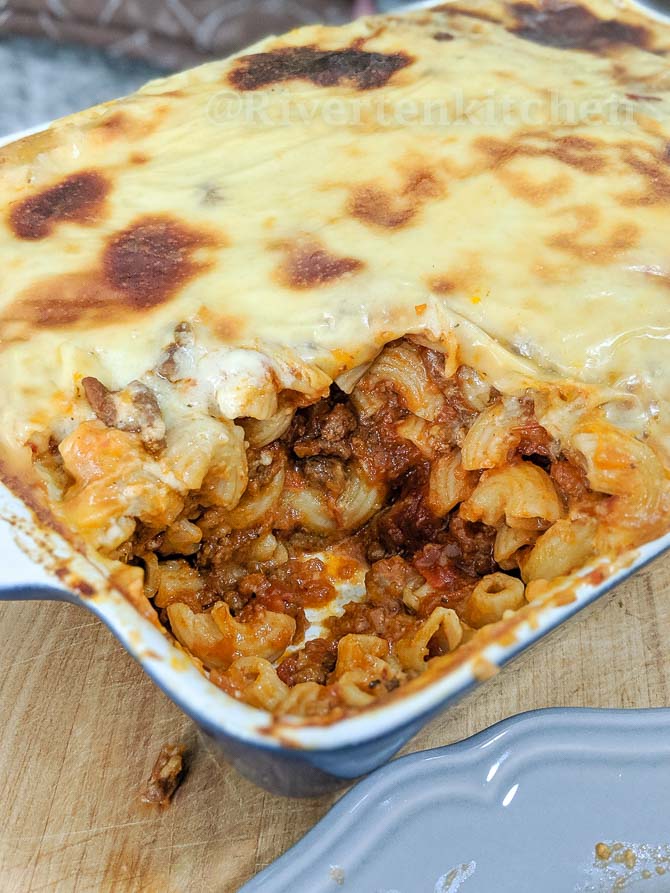
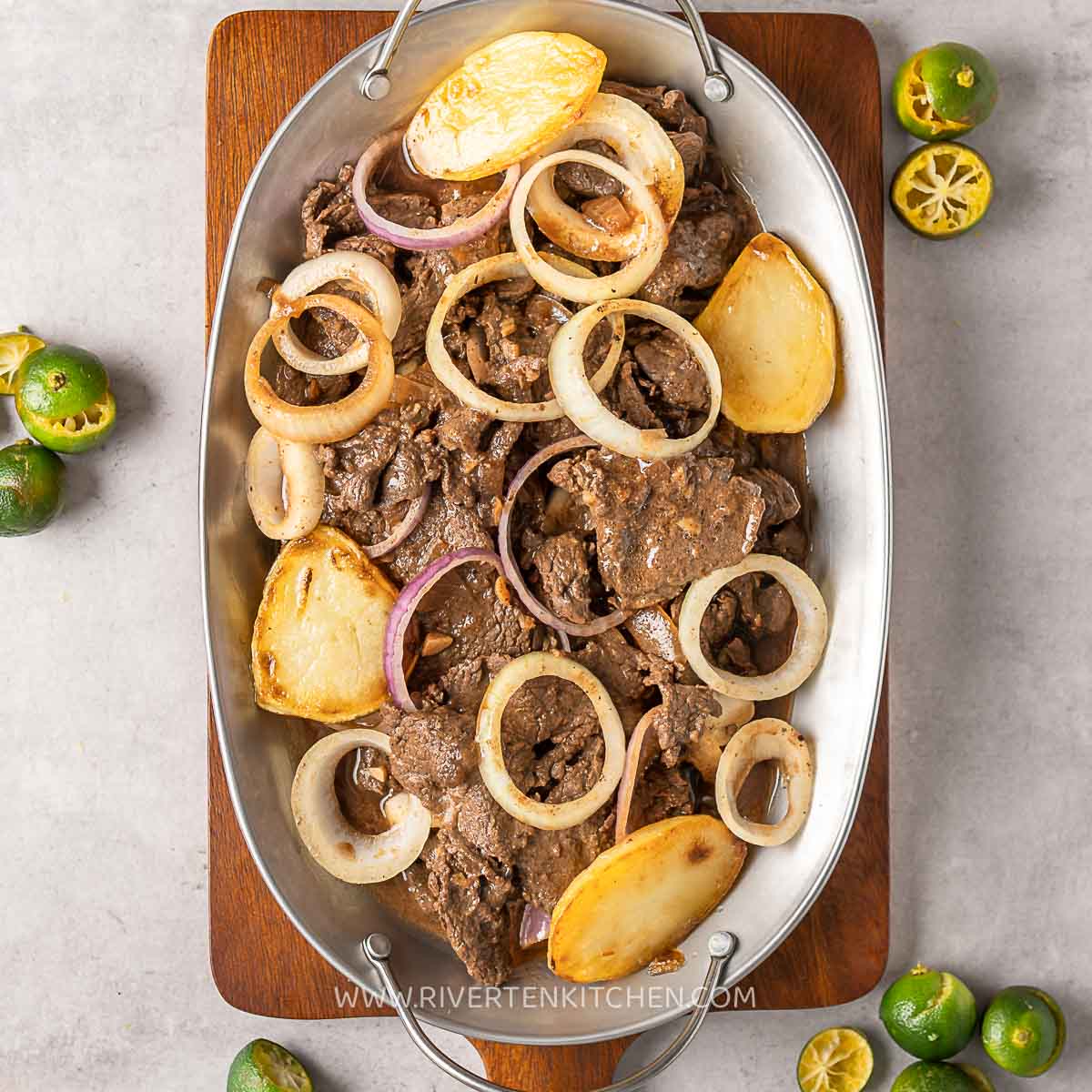
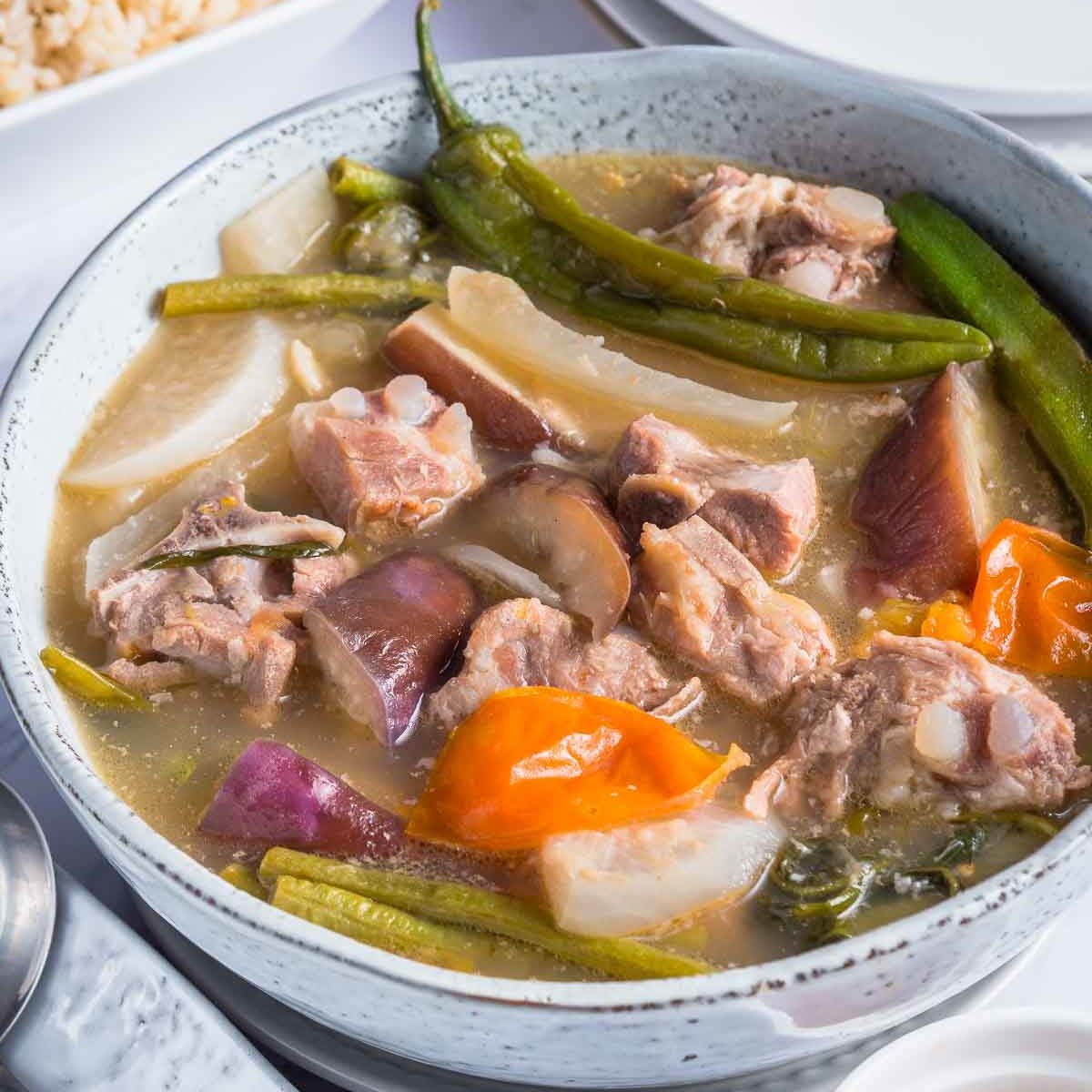

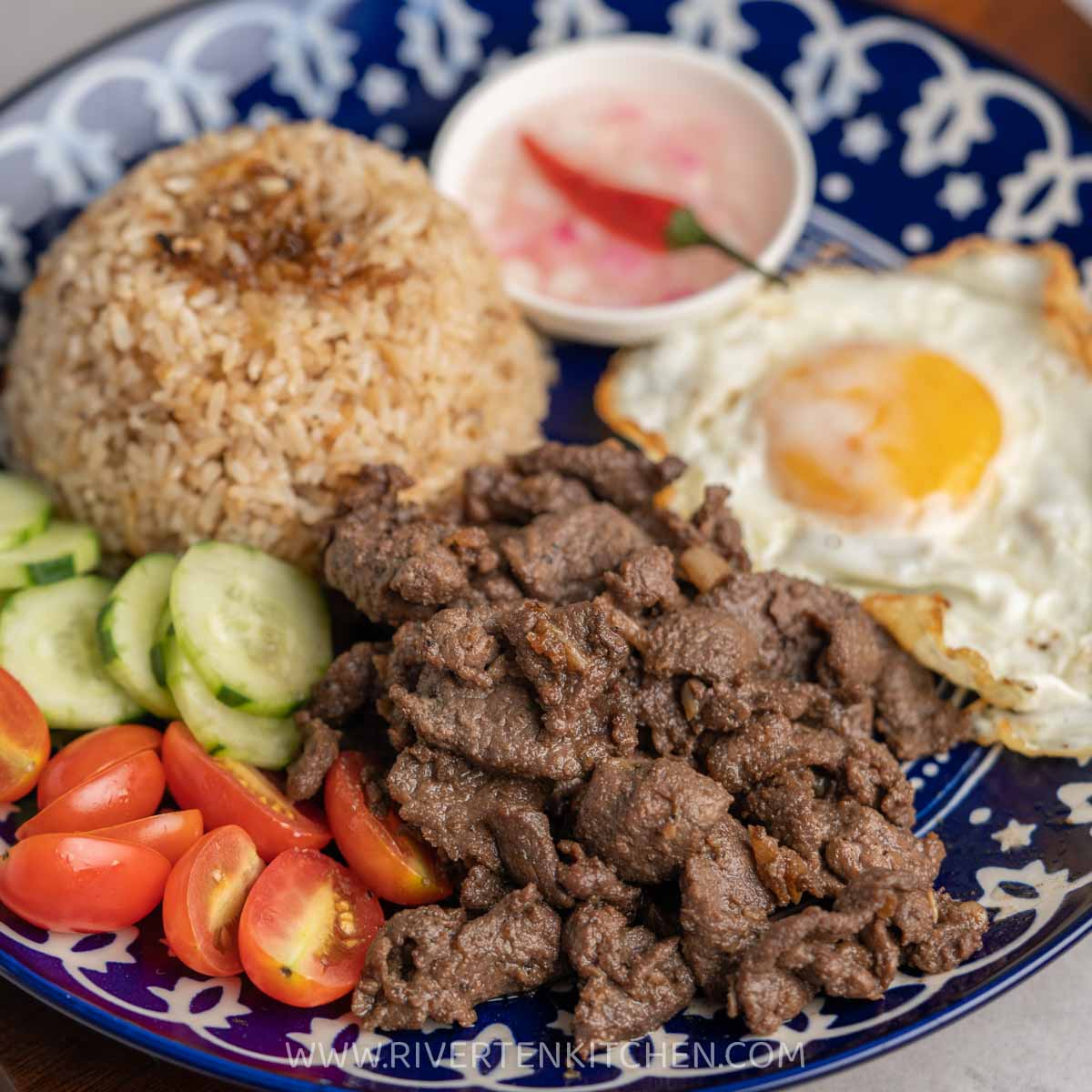
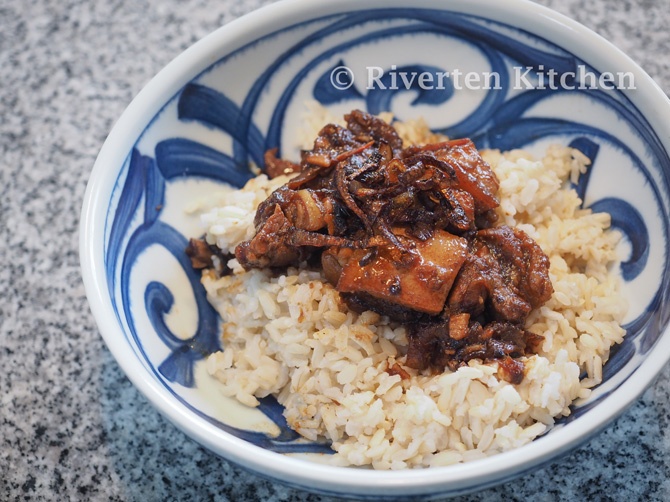
One of the most delicious pancit bihon I’ve ever made (I’ve tried many!). My kids who usually don’t eat pancit enjoyed this.
Thank you!
I want to print and make this recipe but it does not appear to be printable. What must I do to make it printable?
Hi Juliette, just click on the PRINT button in the recipe card. It’s just above the ingredients section.
Mella
Tofu (the firm version) can also be used for those who want to skip the meats.
“Pansit” is pronounced with the accent on the second syllable, not on the first as stated in this article.